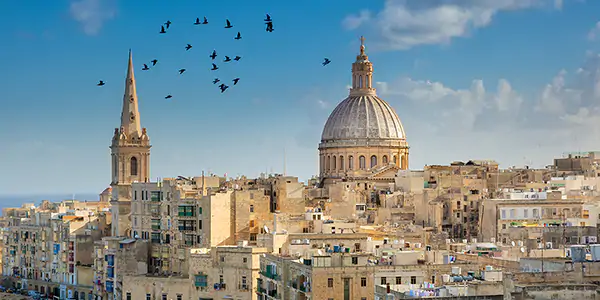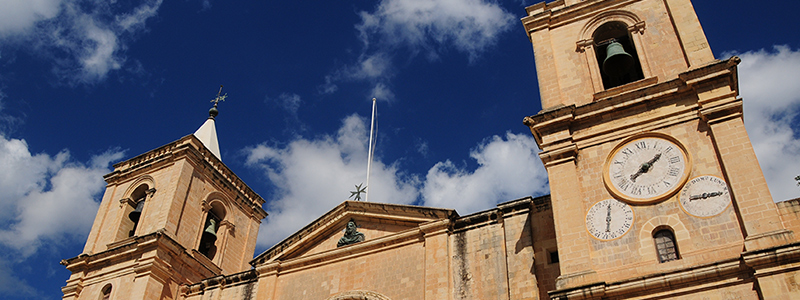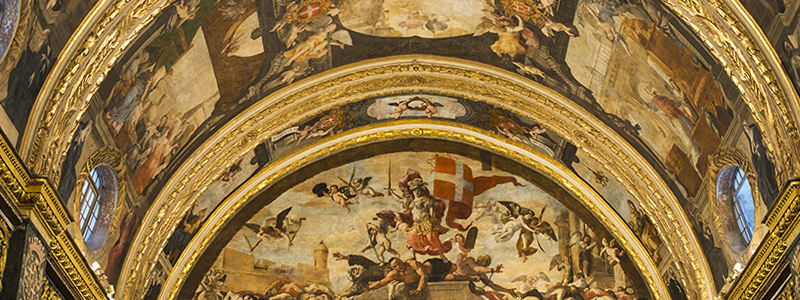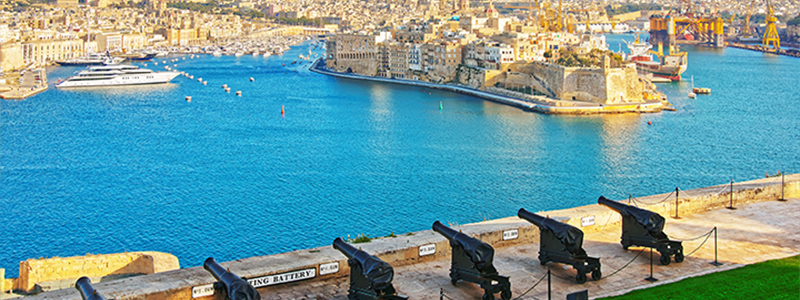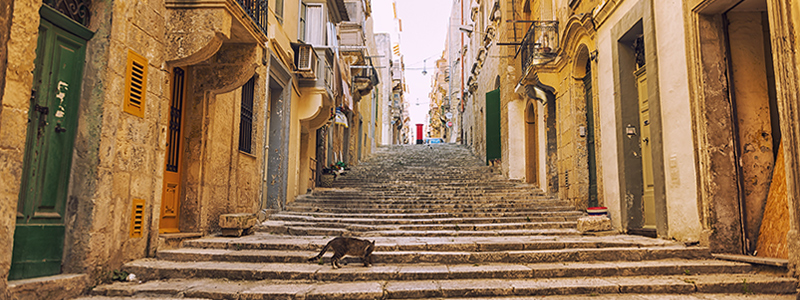Back in the 1950s a young newly wed and her naval officer husband moved to the Island of Malta and immediately fell in love with the place. They settled in a quiet suburb of the capital Valletta and stayed for nearly three years. In 2015 that same couple returned for a few days to the city they called home. This time they came as monarch and consort.
The city of Valletta is a UNESCO World Heritage Site and in 2018 will be the European Capital of Culture.
Designed by military architects, Old Valletta is contained within impenetrable defensive walls and bastions. This and the steep streets, and steps make it an eminently walkable city and very unfriendly to motor vehicles.
Here then are six highlights for a true Valletta experience…
1. Arrive by ferry from Sliema
The best way to approach Malta’s capital is on the Sliema-Valletta ferry. As you take the five minute trip across Marsamxett Harbour you are rewarded with the iconic skyline of Valletta with the large dome of the Manoel Theatre.
2. City Gates
The City Gates were the main entrance into Valletta and were defended by a deep moat. They were in much need of a facelift and renovation. The Italian architect Renzo Piano has sympathetically redesigned the gates and the area immediately behind them. Either side of the massive gateway gigantic shards of steel are embedded in the 16th-century walls like shrapnel from some invading force. Or perhaps they are discarded leftovers from the London Shard which he also designed. Renzo Piano has managed to blend this minimalist modernity into the original defensive architecture.
Beyond the gates are the ruins of the Opera House. Designed by Edward Middleton Barry who also designed the Royal Opera House in Covent Garden, it is an icon for the residents of Valletta. Severely damaged during the incessant bombing by the Luftwaffe in 1942 the Maltese couldn’t bear to tear the remains down. Neither could they agree on what to do with them. For 60 years it remained a ruin until the architect Renzo Piano created an open-air theatre within what was left of it.
3. Visit St John’s Co-cathedral
Malta is a single dioceses and when the Knights of Saint John moved the capital Mdina to Valletta they applied to the Pope for a cathedral.
Unusually they were granted a second cathedral in the dioceses; hence the title co-cathedral. The one in Valletta is dedicated to Saint John the Baptist and houses a painting by Caravaggio of the beheading of the aforementioned saint.
There were eight langues or orders of knights and each one was given a chapel in the new cathedral. Each langue tried to outdo the others in the decorations, frescoes and paintings with the result that the whole cathedral is an opulent Baroque extravagance of gold, marble and paintings.
4. Have coffee and cake at Caffe Cordina
Valletta is full of the legacy of the British and that of its nearest neighbours, the Italians. In Republic Square, the Italian style pavement cafés sit alongside a pillar box and a bright red telephone box that for so long graced the streets of Britain.
Café Cordina in one corner of the square, was established in 1837. Most notable is the unique vaulted ceiling decorated by the Maltese painter Giuseppe Cali, depicting the many diverse periods of Malta’s history. The Café consists of elegant tea rooms, a gelateria, pasticcera, bar and an outdoor café. The pastries here are iconic. Eaten in the tearoom or in the sun splashed square they are an experience, with more than a hint of Italian café culture, that should not be missed.
5. Walk the Battlements
Valletta is surrounded by defensive walls and bastions that are all but impregnable. The views across the Grand Harbour to the Three Cities on one side and the Marsamxett Harbour on the other are the main reason for walking around the walls.
The highest point, just above Victoria Gate, is the Upper Barracca Gardens. These overlook the Grand Harbour and are where you find the Lascaris War rooms, where the defence of Malta was conducted from as well as being the control centre for Allied forces in the Mediterranean. The invasion of Sicily was also conducted from these rooms.
6. Wander the streets of the city
To get a real feel of the city, try wandering the streets off the main drag of Republic Street. From Republic Street and Merchant Street, most of the narrow streets head down hill towards the sea. Being set out in a grid pattern means that at least some of the streets are level for some of the time.
Look up and you are likely to see the gallerija for which Valletta and other towns and cities in Malta are famous. No one knows the exact origin of these covered balconies but Valletta has plenty to find in a variety of different styles and colours.
There are many more places to visit and experiences to have that are not covered in this post. It is one reason I will return to Malta; to explore those parts of Valletta I missed the first time around. Another reason I plan on a return visit… I want more cake and coffee at Caffe Cordina.

